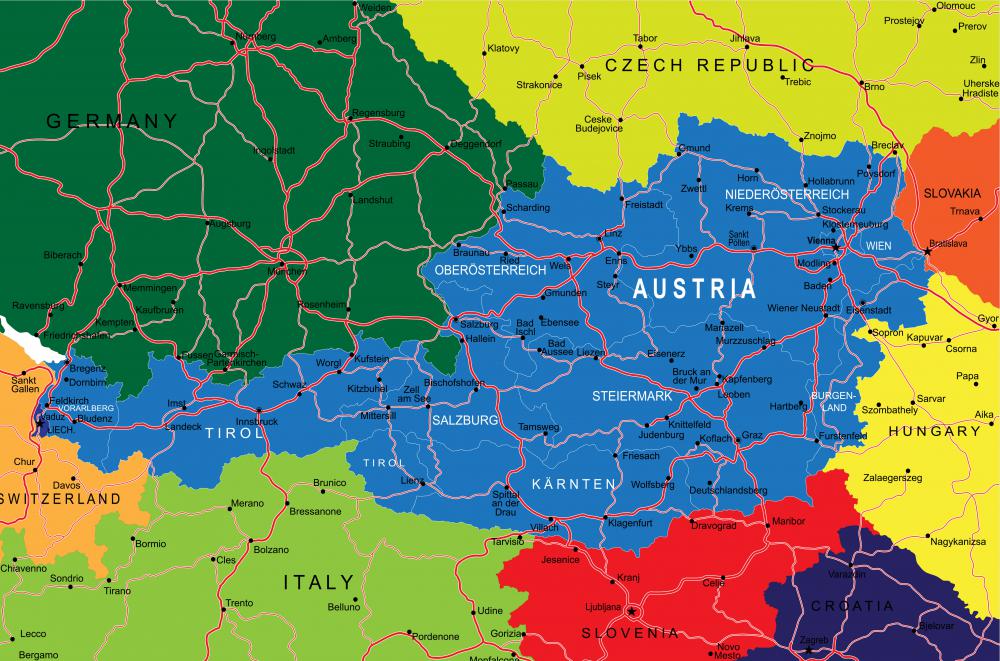At AllThingsNature, we're committed to delivering accurate, trustworthy information. Our expert-authored content is rigorously fact-checked and sourced from credible authorities. Discover how we uphold the highest standards in providing you with reliable knowledge.
What is a Ziege?
Also known as sabre carp or Pelecus cultratus, a ziege is a species of fish. The ziege is of the Cyprinidae family found in Austria, Bulgaria, Croatia, Czech Republic, Denmark, Estonia and other parts of Eastern Europe and Eurasia. Unlike other ray-finned fish found in Europe, the ziege has a long, slender body with a sharp-edged belly that extends from throat to anus, similar to its Asian relatives. It also is characterized by a slightly inclined mouth.
The ziege feeds on zooplanktons and other terrestrial invertebrates as well as small fishes. Its lifespan can be as long as nine years. Although there is no major threat to the species, the zeige experienced a decline in the Black Sea at one point, but the population managed to stabilize.

In large rivers, reservoirs, lakes, floodplains and freshened parts of the sea, the ziege population remains abundant. Similar to other types of fish in the Cyprinidae family, the ziege is particularly abundant in eutrophic lakes, which are lakes that are rich in nutrients. In fact, a ziege contributes to the nutrients of the lake as it feeds on zooplanktons that, on the other hand, graze on algae, which are the lake's source of nutrients.
When the rivers are covered by ice, zieges begin to migrate to large lakes. It is during this time that their breeding season ceases. It resumes as the ice gradually thaws.

Zieges prefers to breed in brackish water — water that is less salty than seawater but more salty than fresh water — at temperatures above 53 degrees Fahrenheit (12 degrees Celsius). The eggs are semi-pelagic, which means that they prefer the open ocean. As soon as they are laid, the eggs drift with the river currents toward the estuaries and to the sea.
Adults return to the estuaries immediately after spawning, this time, to forage. Three to four days later, the eggs hatch to become juvenile zieges, which also migrate to the estuaries the following summer. Zieges begin spawning when they are three to five years old.
The ziege is an important edible freshwater fish across Eurasia. The species is even farmed in some countries. In Eastern Europe, popular preparation methods include drying and salting. It once was a major fish product in countries where zieges are prevalent, but more inexpensive frozen fish has become available.
Zieges remain popular in some places where it also is enjoyed for recreational fishing. It even is stocked in both man-made and natural ponds and lakes for this purpose. This is much like other Cyprinidae, which are popular for angling because of their dense population and biomass.
Frequently Asked Questions
What exactly is a Ziege?
A Ziege is the German word for a goat, a hoofed mammal belonging to the genus Capra. Goats are known for their agility and adaptability, thriving in various environments worldwide. They are often raised for their milk, meat, fur, and skin, and play a crucial role in agricultural economies.
How many breeds of goats (Ziegen) are there?
There are over 300 distinct breeds of goats, according to the Food and Agriculture Organization of the United Nations. These breeds vary widely in size, color, and purpose, with some specialized for dairy production, like the Saanen breed, and others for their fiber, such as the Angora goat.
What is the typical lifespan of a Ziege?
Goats typically live between 10 to 12 years, though some may live longer with proper care. Factors influencing their lifespan include breed, living conditions, and quality of veterinary care. In some cases, domestic goats have been known to live up to 15 years.
What are the main uses of goats in agriculture?
Goats serve multiple purposes in agriculture. They are raised for their milk, which is more digestible than cow's milk for some people and can be made into cheese, yogurt, and other dairy products. Their meat is also consumed worldwide. Additionally, goats' fiber is used for textiles, and their skin for leather goods.
Can goats be kept as pets?
Yes, goats can be kept as pets. They are social, intelligent animals that can form strong bonds with humans. Dwarf breeds like the Nigerian Dwarf and Pygmy goats are particularly popular as pets due to their smaller size and manageable care requirements. However, they need outdoor space and proper veterinary care.
What is the environmental impact of raising goats?
Goats can have both positive and negative environmental impacts. They are effective at controlling brush and preventing wildfires by grazing on undergrowth. However, overgrazing by goats can lead to land degradation and desertification. Sustainable management practices are essential to mitigate these negative effects and ensure environmental balance.
AS FEATURED ON:
AS FEATURED ON:












Discuss this Article
Post your comments